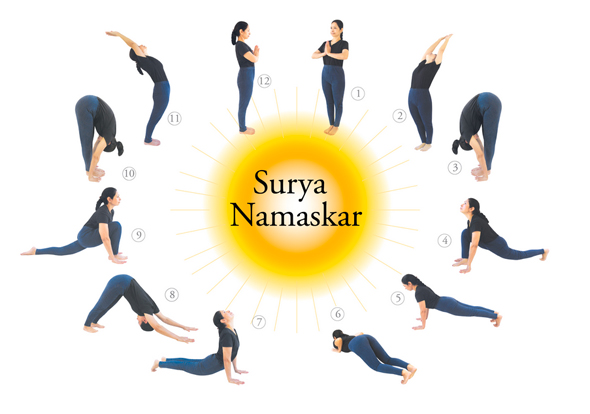What is the Significance of the Yoga Poses in Surya Namaskar?
Saved under Community, Current Stories, Health
Tags: Baytown, Clear Lake, Cypress, Desi news, Greater Houston, Houston, Houston Desi news, India, Indian American community, Indian News, Indians in America, Indo-American News, Katy, NRI, pearland, south asia, South India, Sugar Land, Surya Namaskar, Texas, USA
By Raj & Krishan Gupta
HOUSTON: The International Day of Yoga (Antarāshtriya Yoga Divas) is celebrated annually on June 21 since its inception in 2015. The day was declared unanimously by the United Nations General Assembly on December 11, 2014 and Indian Prime Minister Narendra Modi, in his UN address, suggested June 21, as it is the longest day of the year in the Northern Hemisphere and shares special significance in many parts of the world.
On this day, Surya Namaskar – “Surya” means “Sun” and “Namaskar” means “to bow down” or “Salutation to the Sun”- is performed throughout the world. It is an exercise sequence, which has both the physical and the spiritual aspects. Physically, it involves a series of yogic postures, which provide the body with complete exercise in which virtually all the parts of the body, including the thoracic and abdominal organs are exercised and rejuvenated with vitality. Spiritually, Surya Namaskar is a method of propitiating the Sun-God and enjoying His blessings and helps to progress meditation, a sharp intellect, sound health, and acquisition of spiritual wisdom. Surya Namaskar consists of three important elements – body postures, breathing, and incantations or mantras – each of which needs to be carefully attended to for maximum possible benefits.
The logical conclusion is that the Sun is the life or energy source for this planet and is an element in everything we eat, drink or breathe. The Earth and the Moon are significant in the way they affect life, but the Sun is the source of all energy and when one is in tune with the cycles of the Sun, physical health, well-being, vitality, and energy are all yours. Solar energy is fundamental, even within your body. Your body maintains a certain temperature and it generates heat upon this planet – whether in the form of life or in the form of inanimate material – and all of it is solar energy, finding its expression in many different ways.
Surya Namaskar is therefore a process to harness this solar energy within you so that your physical cycles become in sync with the Sun’s cycles of twelve-and-a-quarter years. So it is by design there are twelve different body postures in Surya Namaskar, which is best done at sunrise. It signifies the twelve signs of zodiac through which the passage of the Sun results in the formation of the twelve months of a year.
This exercise involves six postures in one direction and another six in the other, which mark the return to the original position. It is virtually equivalent to the Sun traversing six signs of the zodiac to give rise to one ‘Ayana’ of six months and returning through another six signs to give rise to another Ayana, thus constituting the Northerly course and Southerly course. The completion of a cycle of Northerly and Southerly brings the sun back to its original position from where the next solar cycle starts.
Inhalation, exhalation, or retention should be natural during various postures. It requires some extra attention in the beginning to be able to synchronize the breathing with the physical posture. With practice, the sequence of posture and breathing will get integrated and appear natural. Obviously, the best results from the practice can only be expected when the posture and the breath proceed in harmony. These postures help tone the muscles and can relax the system and meditative if done at a slower pace. If done fast, it provides a good cardiovascular workout.
Regular practice of Surya Namaskar improves the functions of the heart, liver, intestine, stomach, chest, throat, and legs – basically, the whole body. The process purifies the blood and improves blood circulation throughout the system and ensures proper functioning of the stomach, bowel, and nerve centers. Practicing Surya Namaskar daily also helps balance the three constitutions – Vata (Space & Air), Pitha (Fire & Water) and Kapha (Water & Earth) – that the body is made up of, according to Ayurvedic science.

